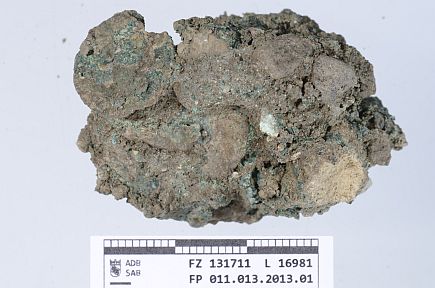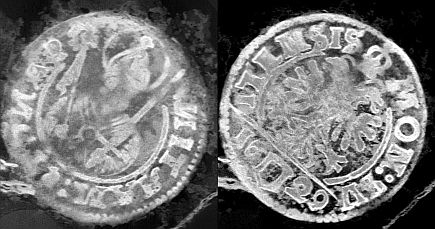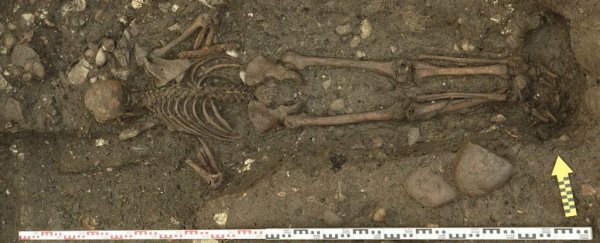Archaeologists have finally found clues that could help them identify a skeleton that was buried face-down in an ancient cemetery in Switzerland's Bernese Lakeland region - a mystery that has baffled researchers since the discovery of the grave in 2013.
New X-ray scans of a coin purse found on the man's chest suggest that he was a travelling merchant who was buried quickly some time after 1629, but that still doesn't explain why he was buried face-down.
"It is possible he was a travelling merchant, because we found coins in the purse from the Fribourg-Bern-Solothurn, Basel-Freiburg in Breisgau, and Luzern-Schwyz regions," said team member Christian Weiss, from the Archaeological Services of Canton Bern in Switzerland.
The mystery started back in 2013 when construction workers in the village of Schüpfen, Switzerland, were forced to stop building an underground parking garage when skeletal remains were discovered mere moments after the project had began.
After archaeologists were called in, they discovered that more than 342 bodies had been buried in the area. Turns out this was a large cemetery, the use of which spanned from the 8th to the 17th century.
While finding hundreds of skeletons is noteworthy in itself, one skeleton in particular, stood out. It was buried face-down with a small leather sack of coins on its chest and a knife at its side.
Evidence from the rest of the graves suggests that the common practice was to wash and bury corpses respectfully on their backs, meaning this man's burial was either hastily performed, or deliberately different.
"It is certainly a deviant burial, in the sense that the burial practices here seem to be very unusual for the time," Weiss told Rossella Lorenzi at Discovery News.
"The individual was facing to the ground; moreover, a knife and a purse were found within the burial where we normally don't find any grave goods in this time."
To understand who the man was, the team examined the purse of coins he was carrying, since coins can give a pretty good indication of the timeframe and location of origin, based on where and when they were minted.
The problem was that, over the course of hundreds of years, the coins had fused together into an obtuse lump of metal:
 Archäologischer Dienst des Kantons Bern
Archäologischer Dienst des Kantons Bern
To analyse them, the researchers called in Mathieu Plamondon, an X-ray expert from the Swiss Federal Laboratories for Materials Science and Technology (EMPA), who used a newly developed scanner called the µDETECT.
This device combines an X-ray scanner with computer tomography (CT) scans to expose hidden details in certain artefacts.
"The block of coins isn't very big, but it absorbs a great deal of energy, so we needed a very powerful source of X-rays," said Plamondon. "We didn't know how well it would work, though, because it was the very first time we had made a measurement with the new instrument."
When the scans were complete, the researchers found that there were 24 coins in total, with most of them containing two metals - copper and silver - and one being made of pure silver.
With further tweaking, they were able to use computer programs to make out the stamps on the coins, and that revealed their origins in three separate Swiss towns, and one in France.
"Taken together, the coins are really just small change," Weiss said. "There is nothing in the purse equivalent in value to, say, a 100 franc note today."
They were also able to see that one of the coins was produced in 1629, meaning that the man had to have died some time after that.
 EMPA
EMPA
Based on the fact that the man had different regional coins on him at the time of his death, the team says it's likely he was a travelling merchant who somehow died in the town and was quickly buried without the normal ceremonies and washings.
While these new details offer clues as to what the man did, and shows that he was likely from the surrounding region, it doesn't provide any evidence to explain why he was buried face-down with his all of his belongings.
The team hypothesises that the man might have been murdered and buried quickly so no one found him, though they also say that he could have died of an infectious disease, causing whoever buried him to do so without washing him first.
The team has yet to publish their findings in a peer-reviewed journal, but as their investigation continues, they will hopefully uncover more about this man, so the real mystery of his burial and death will finally be put to rest.
